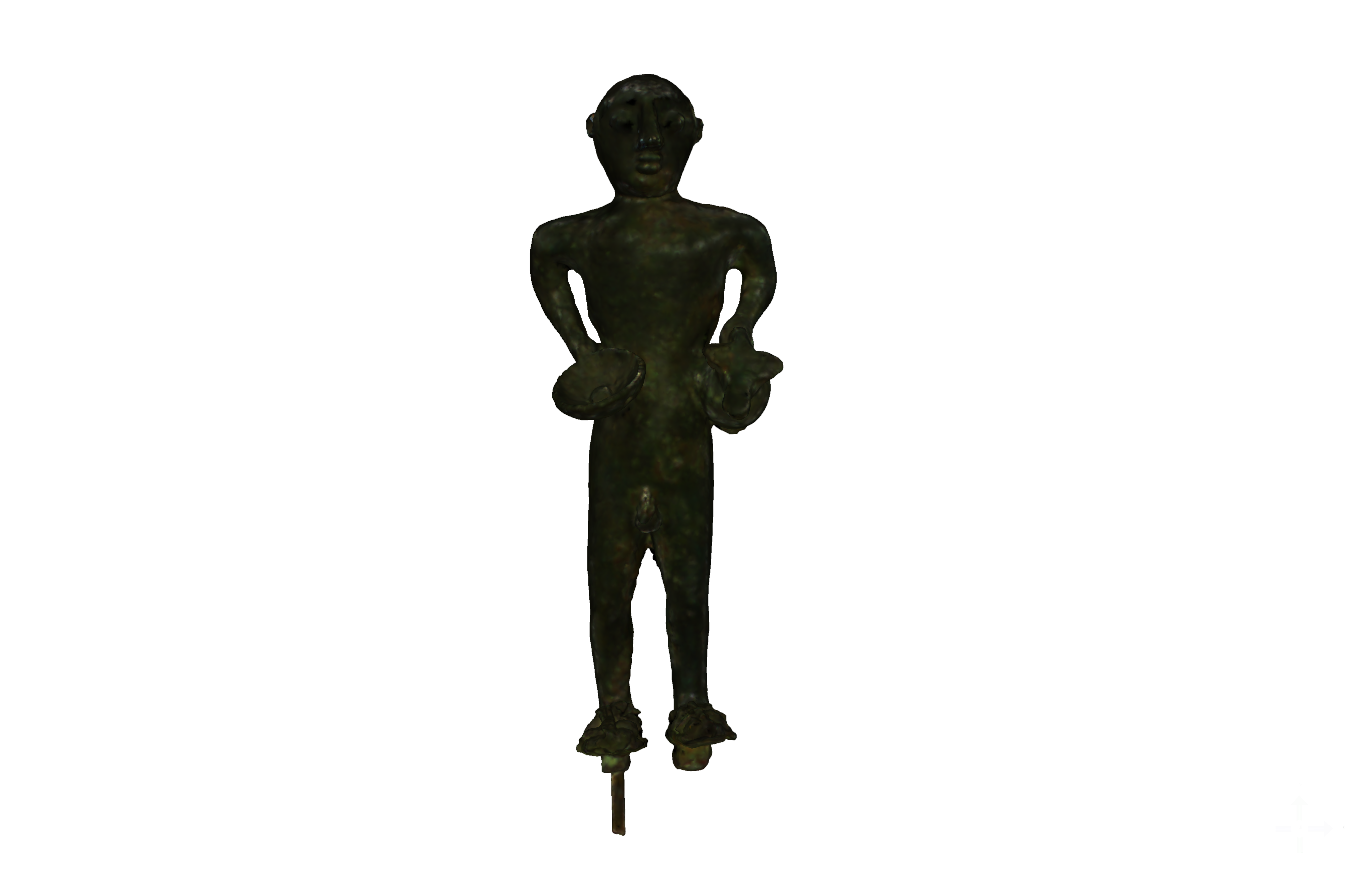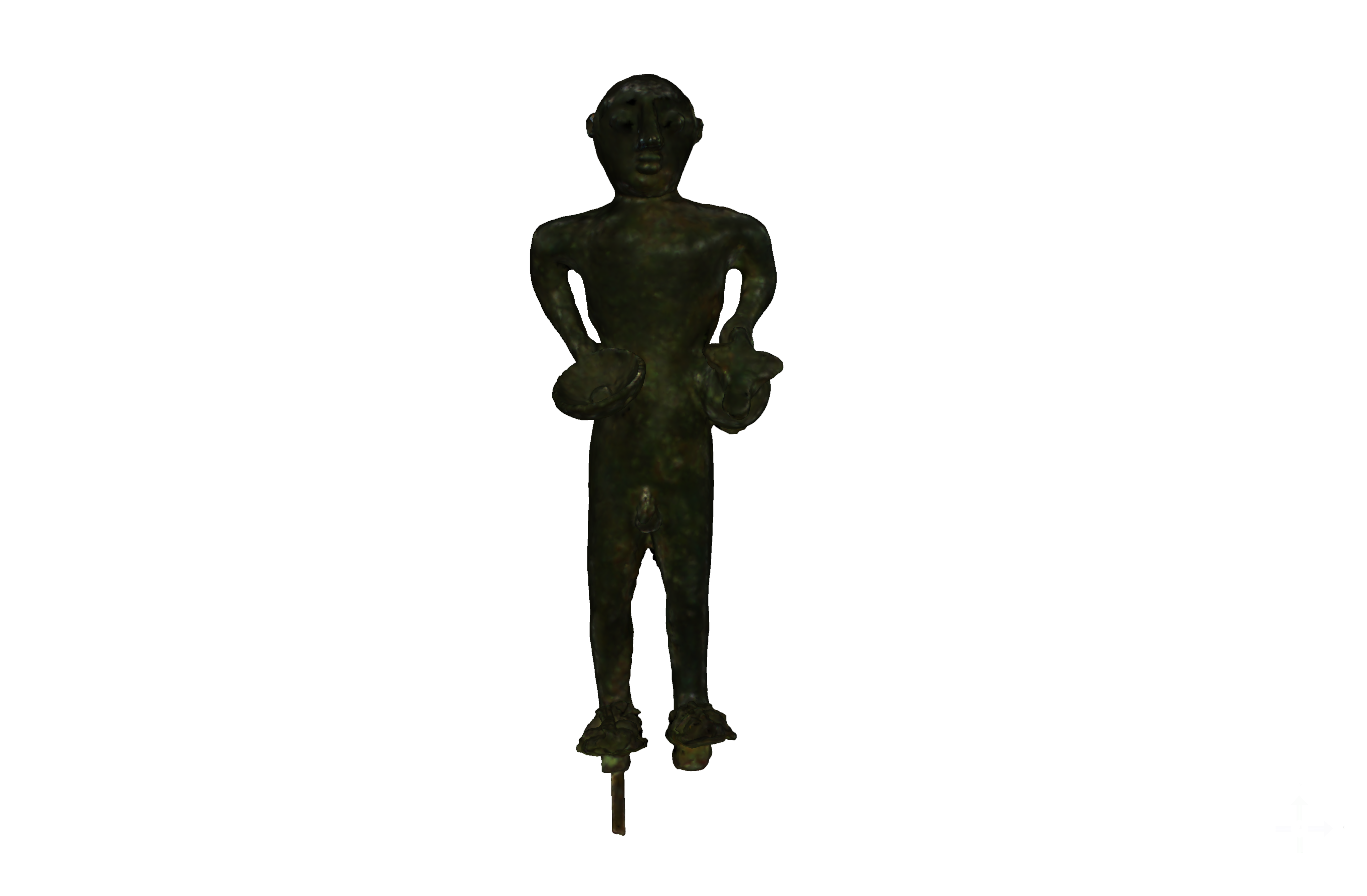Description
Click on the image to go full screen
This small votive statuette, made of bronze using the solid cast (not hollow) technique, was probably found in Padua area and belonged to the Piombin collection, before being donated to the Museo Civico. It depicts a naked man, in a frontal position, with rather pronounced facial features and wearing only sandals, but rendered with considerable care: it is possible to recognise the thick soles, held tightly by a set of knotted laces up to the ankles. Underneath the shoes there are small pins (casting appendages) that suggest that the statuette was embedded in a base.
The particularity of this bronze figurine lies both in the subject and in the gesture it is performing: it represents a devotee holding a pàtera mesómphalos (a dish) in his right hand, and a Schnabelkanne (a jug with a pointed spout) in the other, elements that refer to the ritual of libation.
The typology of creation of the “libante” follows the typical plastic pattern of the mid-fifth century B.C. in Etruria, and also the objects he holds in his hand refer to Etruscan material culture: the Schnabelkanne jug is a Vulci production, imported into the Venetian world and beyond the Alps, as are the concepts of banqueting and ritual libation.
This small object is the evidence of an often little-known aspect of the life of the ancients, which is religion and the importance of worship. Since we do not have information on the context in which it was found, it is not possible to trace the deity to whom it was dedicated, but what it does show us is the actual scene of a worshipper in the act of making an offering, introduced into the venetic culture through Etruscan influence, which was imitated and made immortal.

